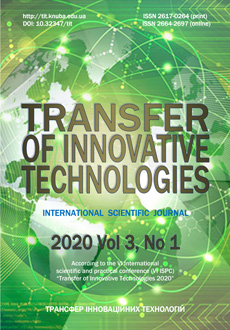Analiz konstrukcij robochih organiv kabeleukladachiv beztranshejnim sposobom
DOI:
https://doi.org/10.32347/tit2020.31.0205Keywords:
Робочий орган, ґрунт, кабелеукладач, безтраншейний спосіб, підземні комунікаціїAbstract
Безтраншейний спосіб будівництва за останні роки знаходить все більше застосу-вань. Основні його переваги: це високі ро-бочі швидкості прокладання (до 5 км/год), різке зменшення об’єму земляних робіт, збереження гумусового шару ґрунту на поверхні землі, можливість використання в обвальних ґрунтах, а також в ґрунтах з тве-рдими включеннями і високим рівнем ґру-нтових вод. Робочі органи безтраншейних кабелеукладачів мають просту конструк-цію, високу надійність, і порівняно малу вартість [1].References
Зухба А.Г., 1997. Перспективы применения бестраншейных и траншейных технологий укладки линий связи в прочных грунтах. Гірн., буд., дор. і меліор. машини, К.: КДТУБА, ,Вип.51, 73-80.
Кравець С.В., Нечидюк А.А., Косяк О.В., 2018. Машини для прокладання підземних комунікацій (наукові основи створення). – Рівне, 271.
Кравець С.В., 1999. Ґрунтозахисні та енергозберігаючі машини для прокладки підземних комунікацій. Рівне, Видавництво РДТУ, 277.
Ткачук В.Ф., Романовский А.Л., Кравец С.В. 1988. Тенденции развития рабо-чих органов бестраншейных дреноукладчиков. Гидромелиорация и гидротехниче-ское строительство, Вып.16, 90-93.
Бондаренко О.В. Андрєєв В.О., Панюта І.М., 2014. Будівництво та монтаж волоконно-оптичних систем передачі: підручник. Одеса, ОНАЗ ім. О.С. Попова, 228.
Downloads
Published
How to Cite
Issue
Section
License
Copyright (c) 2020 Transfer of Innovative Technologies

This work is licensed under a Creative Commons Attribution-NonCommercial-NoDerivatives 4.0 International License.
Our journal abides by the CREATIVE COMMONS copyright rights and permissions for open access journals.
Authors, who are published in this journal, agree to the following conditions:
1. The authors reserve the right to authorship of the work and pass the first publication right of this work to the journal under the terms of a Creative Commons Attribution License, which allows others to freely distribute the published research with the obligatory reference to the authors of the original work and the first publication of the work in this journal.
2. The authors have the right to conclude separate supplement agreements that relate to non-exclusive work distribution in the form in which it has been published by the journal (for example, to upload the work to the online storage of the journal or publish it as part of a monograph), provided that the reference to the first publication of the work in this journal is included.




